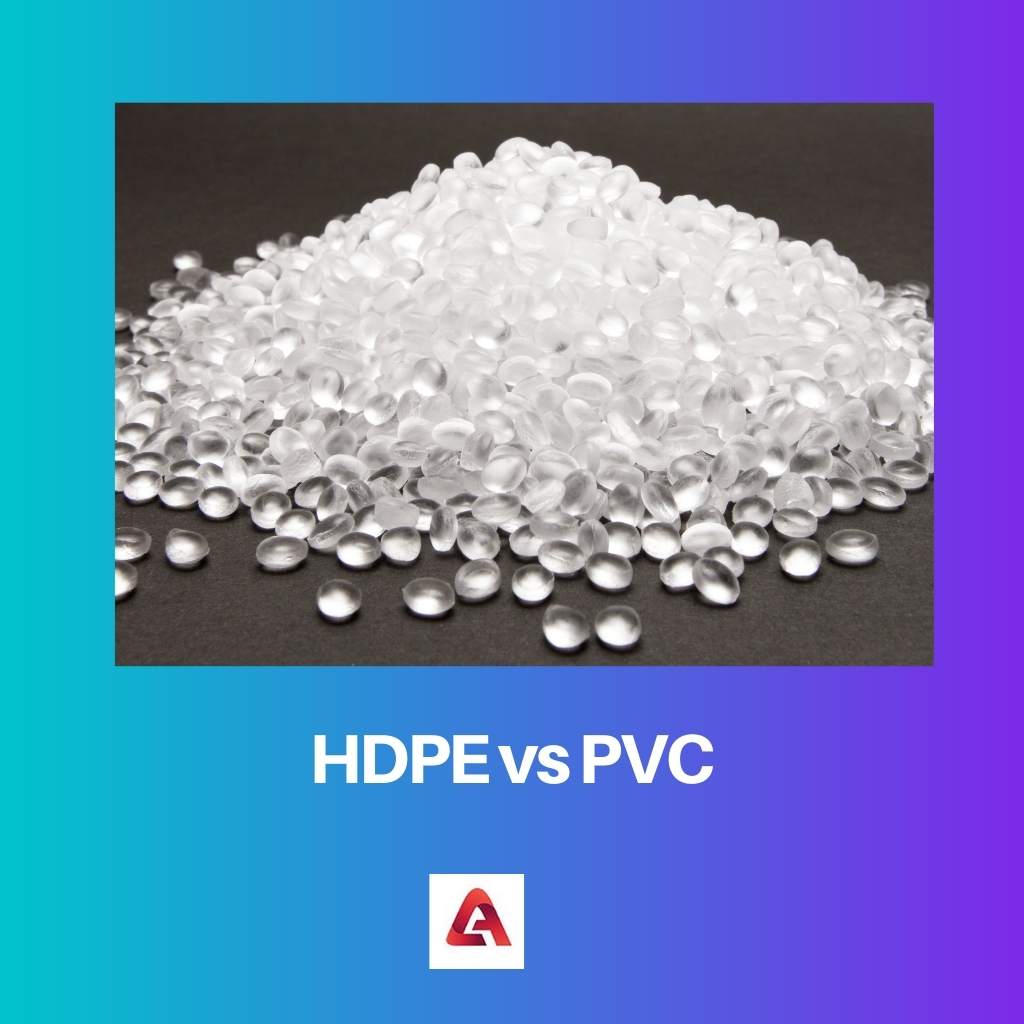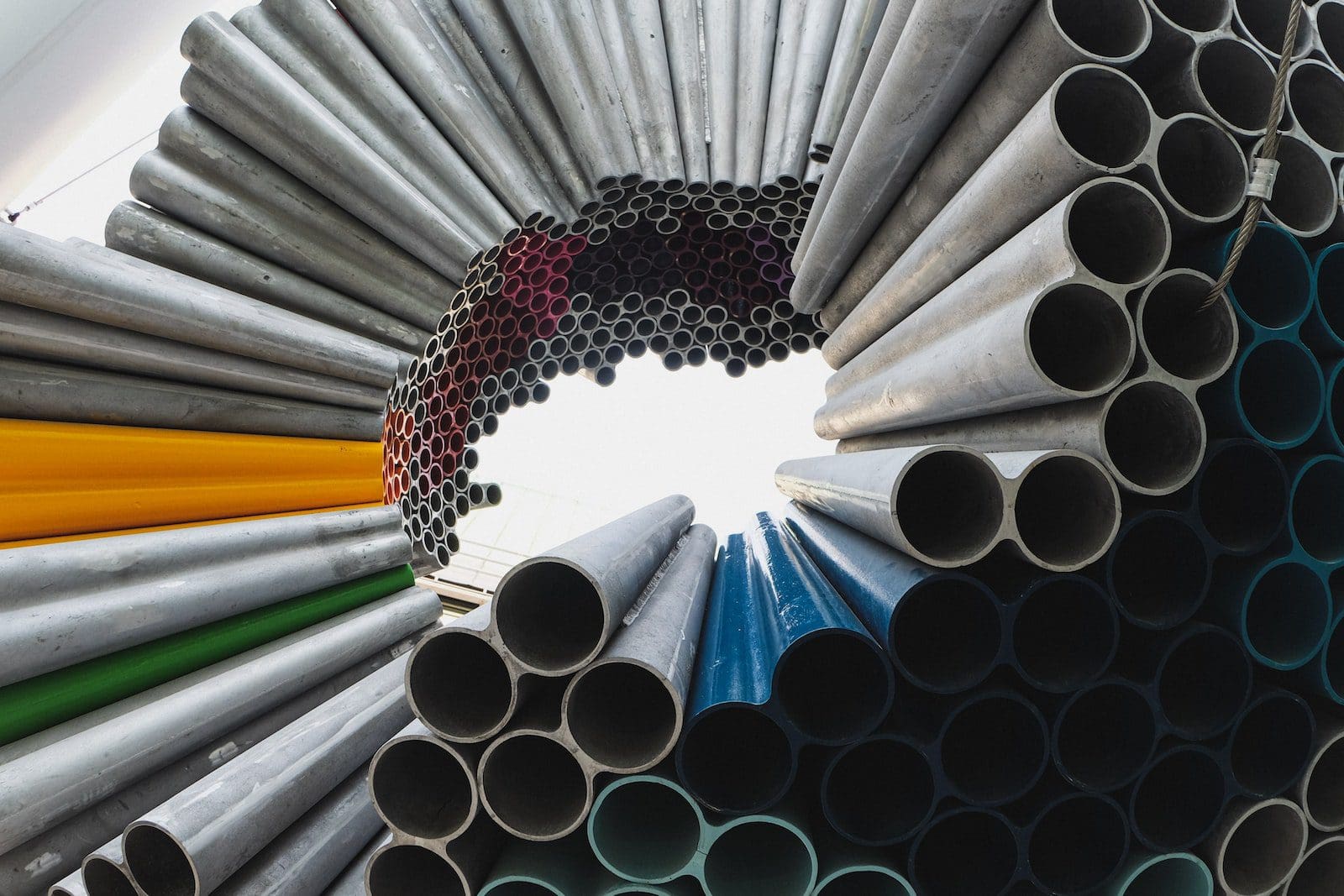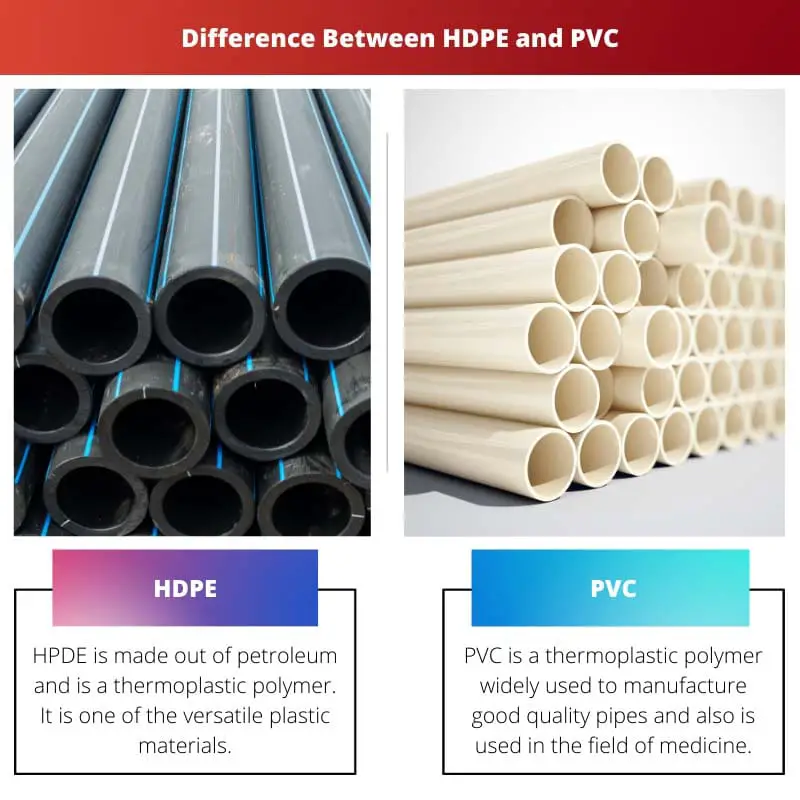Plastics are best known for their excellent elasticity and malleability. Due to these properties, they are widely used to cast different shapes and sizes.
Thermosetting plastics cannot be melted and cast into different objects more than once, whereas thermoplastics can be.
Key Takeaways
- HDPE is a type of plastic that is more flexible and durable than PVC.
- PVC is a rigid plastic used for pipes, window frames, and other construction materials.
- HDPE is more chemically resistant and can be used for a wider range of applications than PVC.
HDPE vs. PVC
The difference between HPDE and PVC is that HPDE is semi-crystalline, whereas PVC is amorphous. Polyvinyl chloride (PVC) and high-density polyethylene ( HDPE ) are typical examples of thermoplastics. These thermoplastics are widely used in manufacturing bottles, tanks, toys, pipes, and similar products. Both of these plastics are commodity polymers. Thermoplastics are best known for their capacity to be melted and reused several times.

HDPE is manufactured from ethylene monomer. When used in pipes, it is also known as alkaline and polythene. It has a high strength-to-density ratio.
PVC is a synthetic, plastic, thermoplastic polymer. Every year over 40 million tons of PVC are manufactured. They are used in pipes and the construction of doors and windows. Food covering sheets is a significant application of this PVC.
Comparison Table
| Parameters of Comparison | HDPE | PVC |
|---|---|---|
| Definition | High-density polyethylene (HDPE) is semi-crystalline and expensive. | Polyvinyl chloride (PVC) is inexpensive, affordable, and amorphous. |
| Surges | High-density polyethylene (HDPE) can dampen and absorb the waves to prevent the system from being affected by reducing the surges. | Polyvinyl chloride (PVC) does not reduce surges. |
| Areas of Applications | High-density polyethylene (HDPE) is best suited in lower-pressure areas. | Polyvinyl chloride (PVC) is best suited in trenchless regions and burial areas. |
| Properties | High-density polyethylene(HPDE) is resistant to heat and abrasion. | PVC is best known for its high durability and sturdiness. |
| Usage | High-density polyethylene (HPDE) is the most popular plastic used commercially. | PVC is ranked three among the most popularly used types of plastics. |
What is HDPE?
HPDE is made out of petroleum and is a thermoplastic polymer. It is one of the versatile plastic materials. It is used for a lot of a wide variety of applications.
It is also used in medical applications like plastic surgeries, especially for facial surgeries and those related to skeletal reconstruction. It is also used in show boards and 3-D printing applications.
It has a texture that gives a better grip on products made out of HDPE. It is also present in food-grade quality. The products are made out of it ensures low maintenance, safe and long-lasting.

What is PVC?
PVC is a thermoplastic polymer widely used to manufacture good quality pipes and used in medicine. It is also used in medical devices and cable insulation.
It has excellent properties of durability, less expensive cost, and ease to process. All these have led to PVC being used as a replacement component in building materials and construction applications. It is also used instead of wood, concrete, ceramics, rubber, and sometimes even used instead of metals.
PVC is found in many forms. Some of them are plasticized or flexible PVC, rigid or unplasticized PVC, chlorinated PVC, modified PVC, and molecularly oriented PVC.
Some of the merits of these PVCs are that high stiffness, flame retardant properties, better chemical resistance, dimensional stability, and insulation properties.

Main Differences Between HDPE and PVC
- HPDE can reduce surges, whereas PVC does not, and it leads to damage to the system.
- HPDE has most of its applications in areas with low pressure, while PVC is suited for burial areas and also regions that lack trenches.

- https://pubs.acs.org/doi/pdf/10.1021/ed051p541
- https://www.sciencedirect.com/science/article/pii/S0008622303003877

The clarity in stating the main differences between HDPE and PVC is commendable.
The detailed explanation of HDPE and PVC, along with their various forms, provides a well-rounded view of these plastics.
Cameron, this article indeed captures all essential aspects of these polymers.
A very comprehensive comparison between HDPE and PVC, well-articulated.
This article is packed with technical details, but the application sections make it easier to understand the practical use of these plastics.
Agreed, Treynolds. It provides a good balance of theoretical and real-world applications.
The real-world examples of HDPE and PVC usage are insightful.
The comparison of chemical properties and resistance are discussed in depth, making it very enlightening.
The main differences between HDPE and PVC are clearly outlined, leaving no room for ambiguity.
The information provided is quite scientific and technical, but it gives insights into material sciences.
This article provides a comprehensive comparison of HDPE and PVC, it is very informative and useful.
I agree Wilson, the different properties of the plastics were well explained in great detail.
After reading this, I am convinced to use HDPE over PVC, the resistance to heat and abrasion make it a superior choice.
Bpalmer, I think both have their specific usage scenarios, it depends on the application requirements.
The content includes a detailed comparison table which makes it easy to understand the distinctions between HDPE and PVC.
Definitely, Cwilson. The table provides a quick reference for the readers.
Yes, the comparison table is very helpful in summarising the key differences.
The article is well-referenced, lending credibility to the presented information.